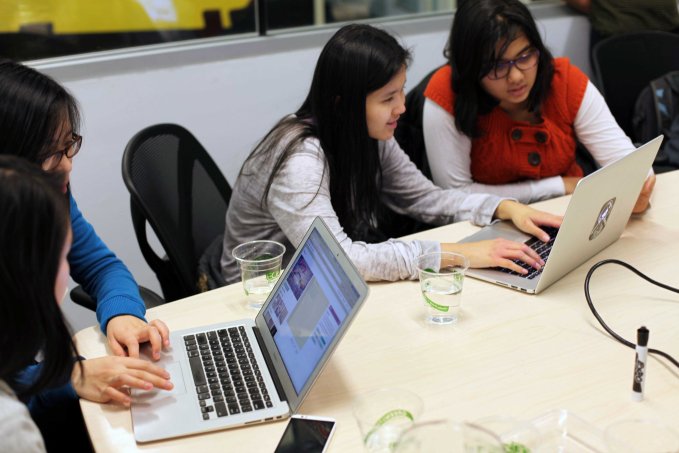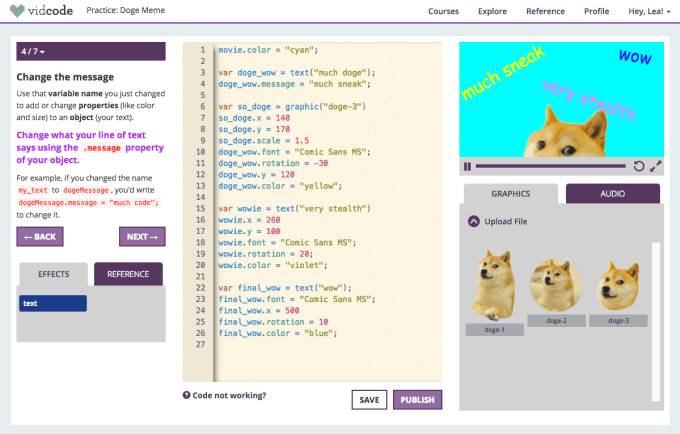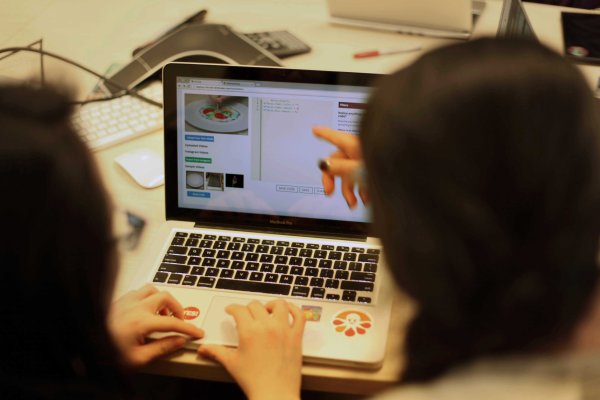Vidcode, a Y Combinator-backed startup focused on teaching teens how to code, has raised $1.5 million in seed funding for its curriculum. While there are a number of learn-to-code platforms out there today, Vidcode’s approach is to make coding more interesting to teens by connecting it to their existing interests – like Snapchat filters and memes – while also allowing young coders to leverage their own photos, videos and audio in their projects.
Last summer, for example, the company launched a Snapchat geofilter contest which saw over 10,000 entries, and the winner had their filter uploaded to the popular social app. (Of course, this was well before Snapchat let you create your own geofilters in its app – a feature it just introduced last week.)
Today, students use Vidcode to learn basic to advanced object-oriented programming through one of their favorite hobbies – video-making, while other project-oriented lessons teach them how to create memes, video filters, interactive games, GIFs, and more, using real programming languages.
The curriculum itself includes a variety of courses that are designed to be the next step after visual block coding. For example, Vidcode offers courses on beginner to advanced JavaScript, design thinking, and interaction design. They’re also now delving into new technologies, like VR, where Vidcode can be that first step before jumping to something like Unity.

The startup is co-founded by Alexandra Diracles, Leandra Tejedor, and Melissa Halfon and has a small team in both New York and San Francisco.
It had initially begun as a Startup Weekend hackathon project back in 2014, where the team first met. After winning the competition, they continued their work, realizing the need for solutions like this.
By 2020, there will be 1 million jobs in computer programming left unfulfilled, the team points out, but only 40% of schools teach this skill.
Last year, Vidcode’s solution was being used by 1,000 schools; it has now grown to reach over 25,000 schools, largely in New York, California, Arkansas, Kansas, and Texas.
In Arkansas, the solution is being used to help schools meet a new state requirement that every 7th and 8th grader has to have a 4 to 5 week coding block during middle school.
One of the popular use cases in schools is Vidcode’s suite of five-week, cross-disciplinary courses.
“Across the country, as states, governments, parents and teachers are trying to get code to every student, they’re really looking at a cross-disciplinary approach,” explains Diracles. “Because there’s not enough teachers out there, and there won’t be enough teachers for many years.” Vidcode’s solution allows teachers to instead embed the five-week course into their classroom.

In addition to selling its software, curriculum and training directly to schools, Vidcode also sells through strategic partnerships, most recently with edtech company BrainPOP which is now both a partner and investor.
Vidcode has launched a creative coding tool on BrainPOP that uses Vidcode’s underlying technology and style of coding to allow kids to make any kind of project across the curriculum in the hundreds of topics that BrainPOP offers.
Vidcode’s larger goal is to reach 20 million students, 10 million of whom are girls, by 2020 though both the schools and strategic partnerships, the team says.
Vidcode participated in Y Combinator last summer, and has now gone on to raise a $1.5 million seed round from investors including ZhenFund, Rethink Education, NYU Ventures, CoVenture, Evan Korth Syndicate, Stephano Kim, and Cherry Ventures, in addition to BrainPOP.
The team plans to use the new funds to further extend sales through more strategic partnerships, and expand the curriculum into newer areas like AR and VR, as well as into more advanced coding.
